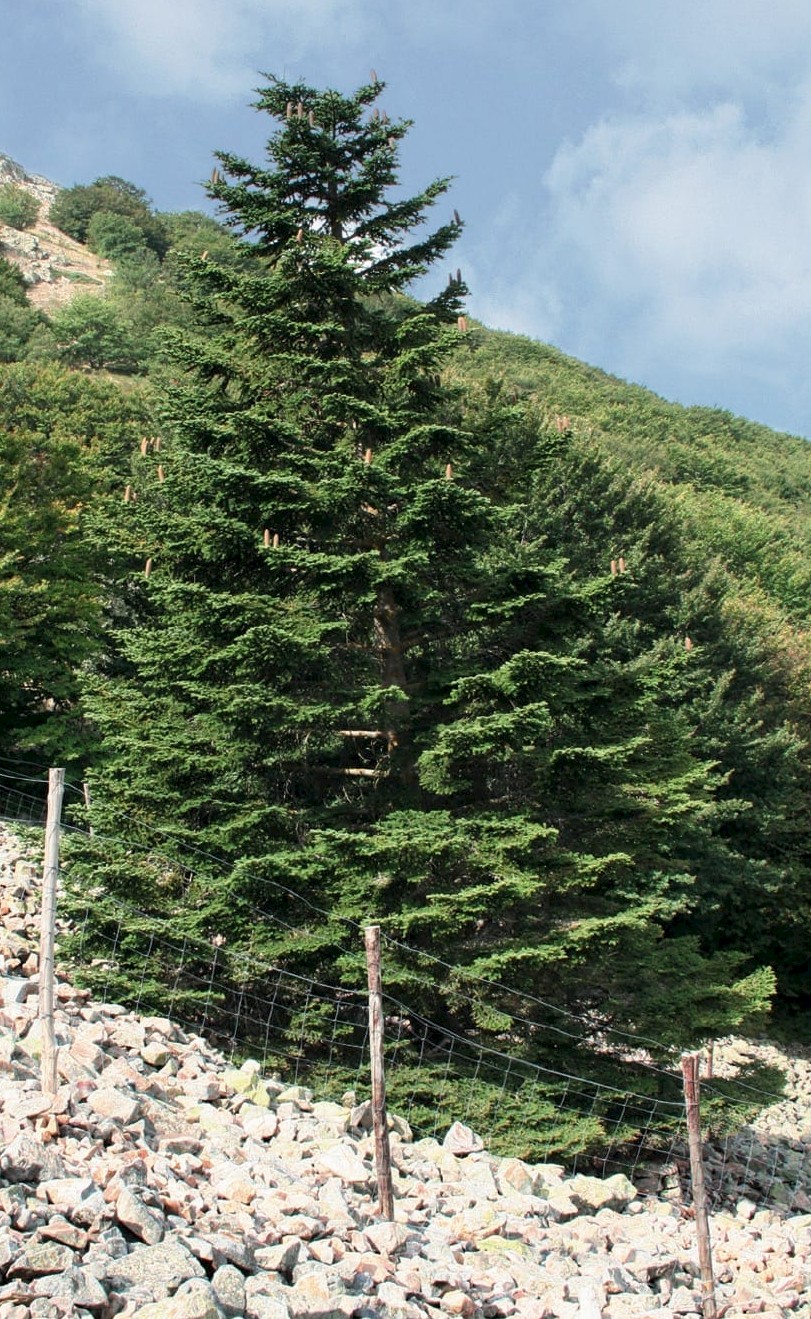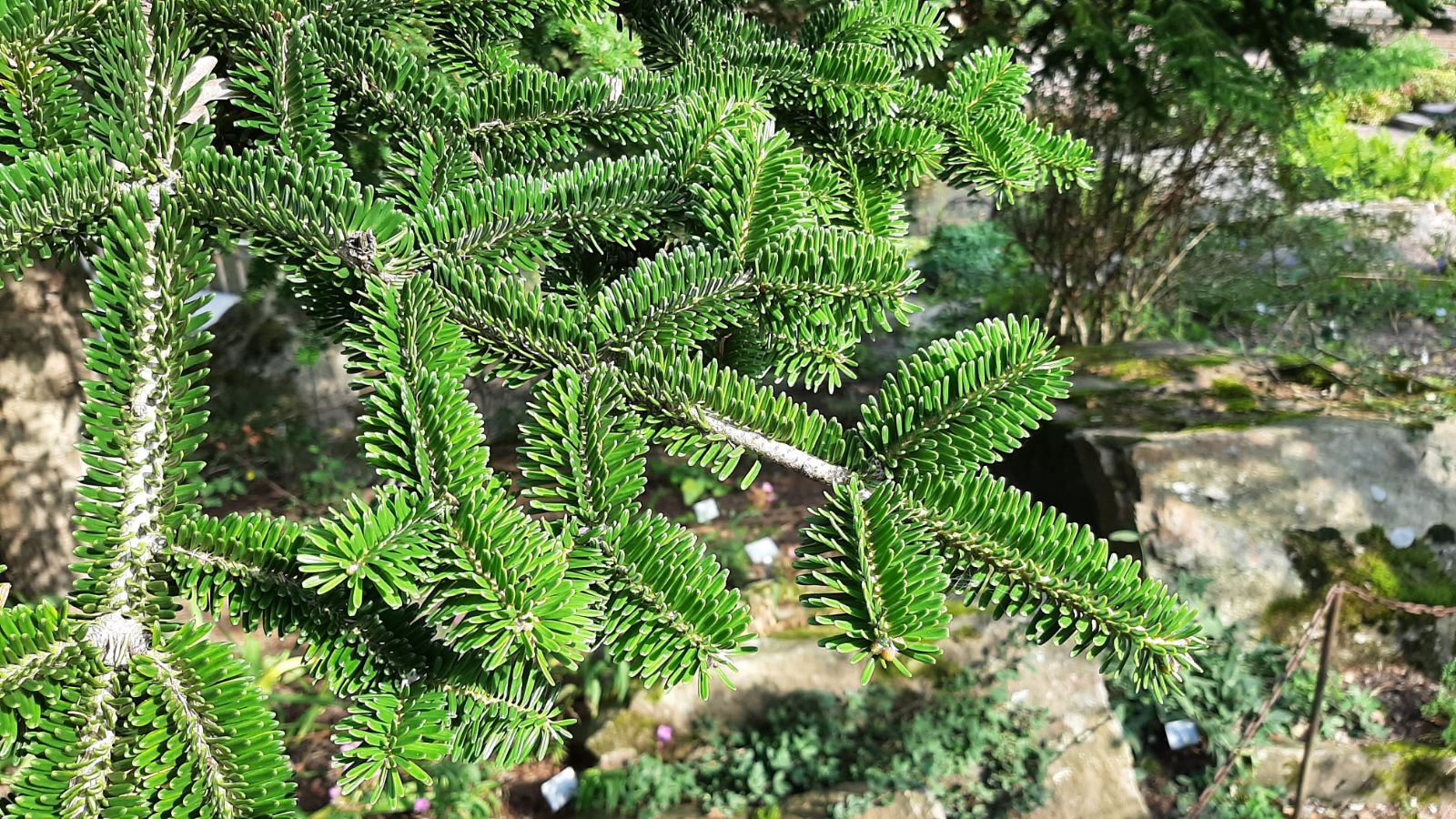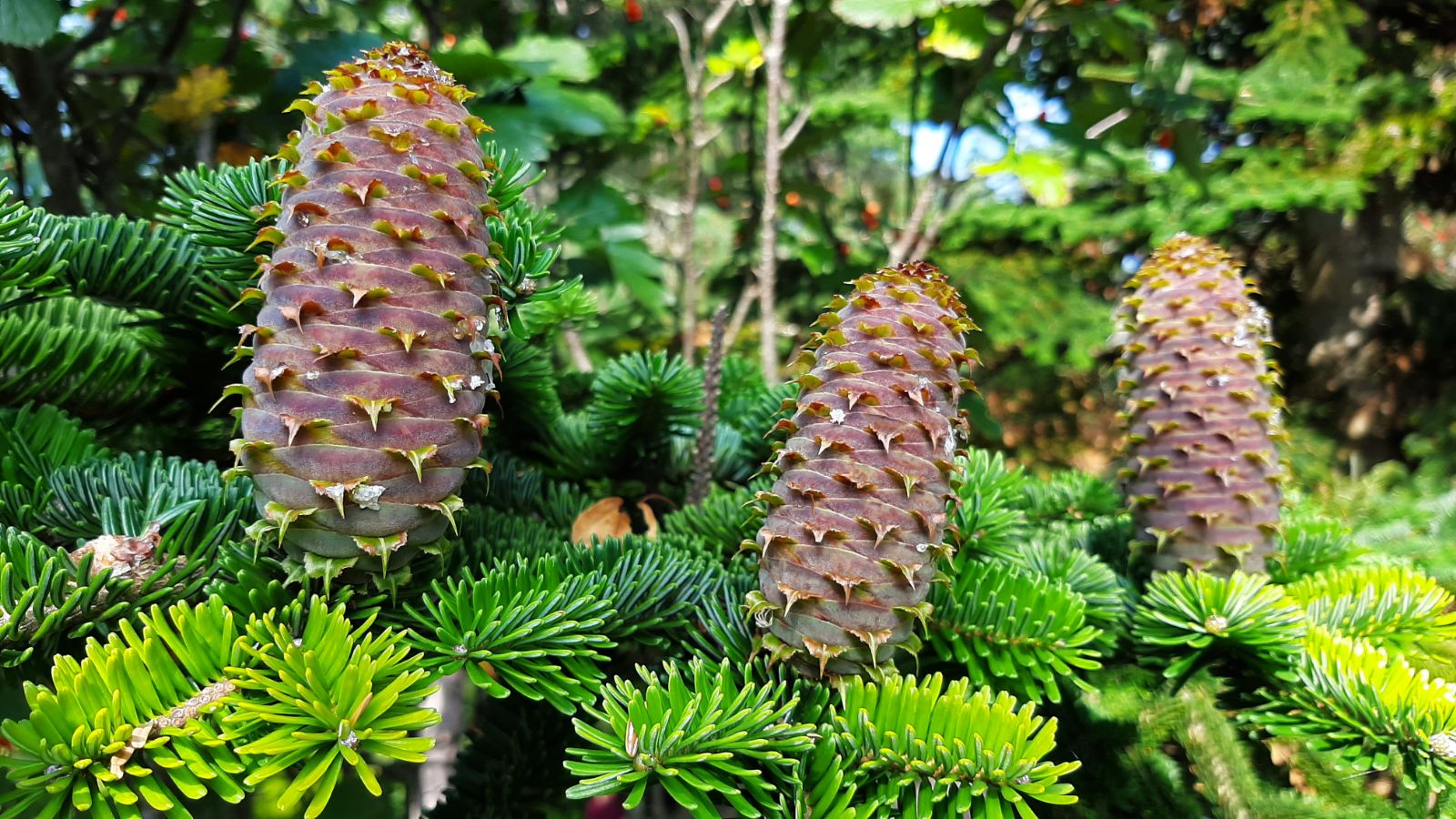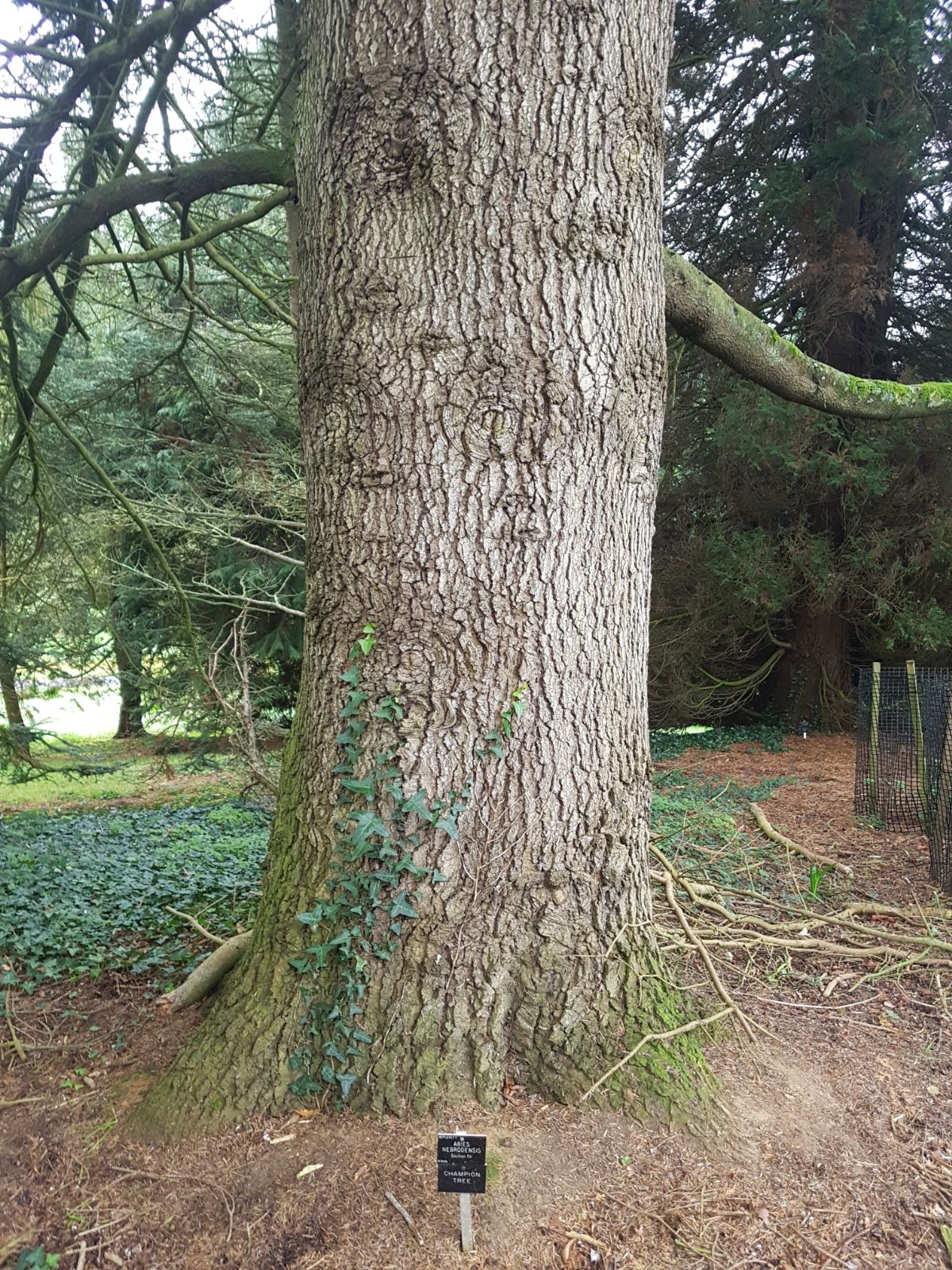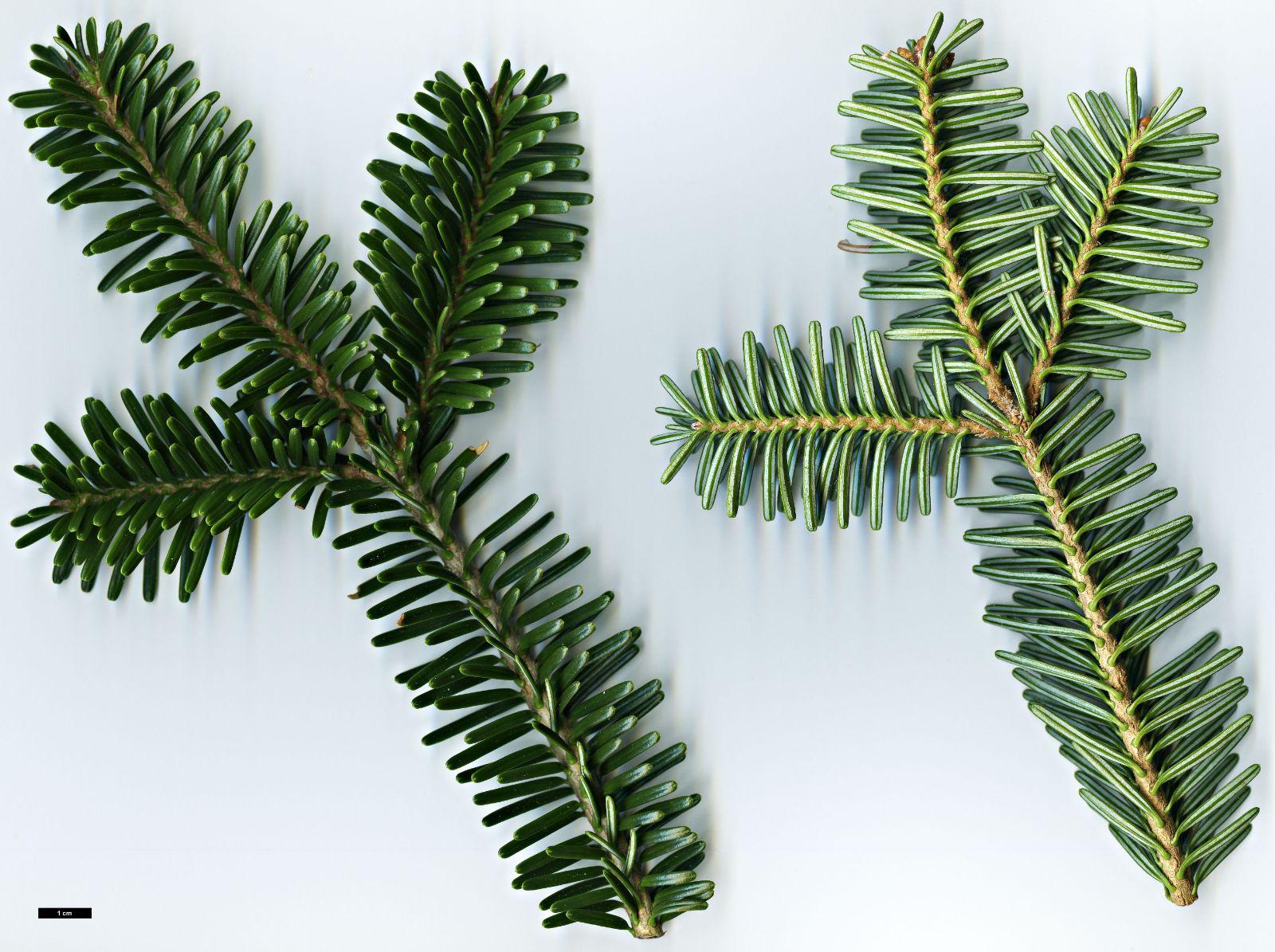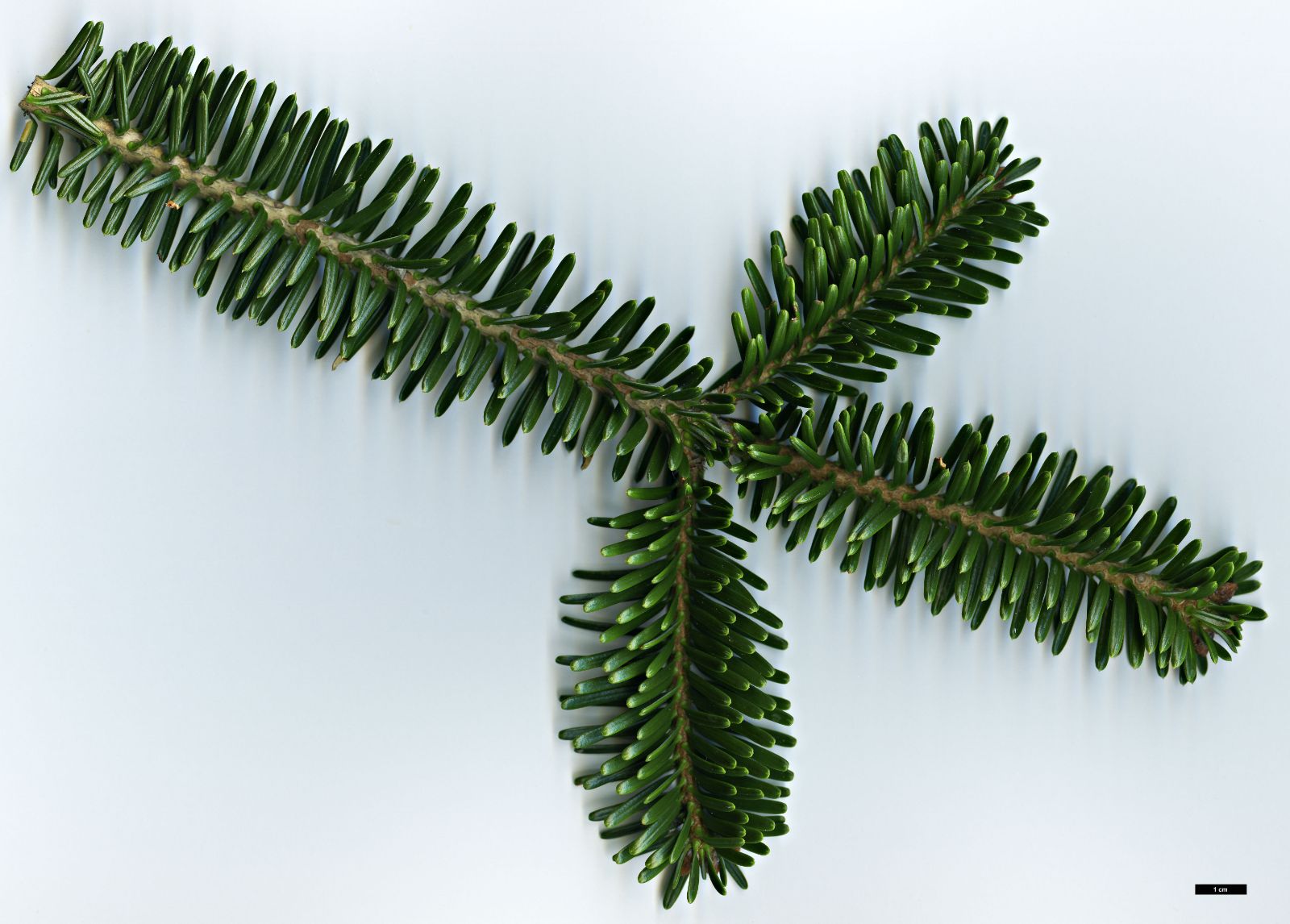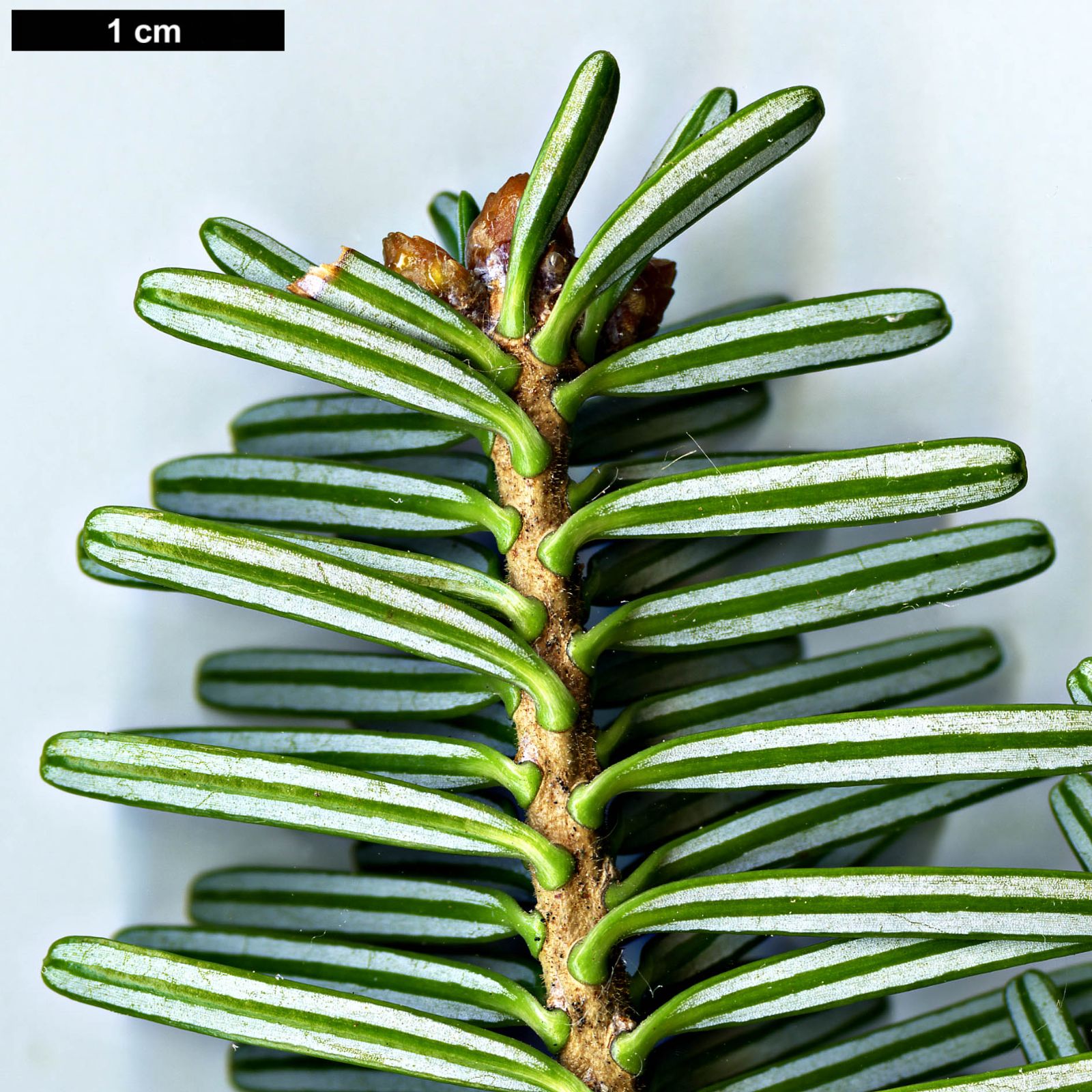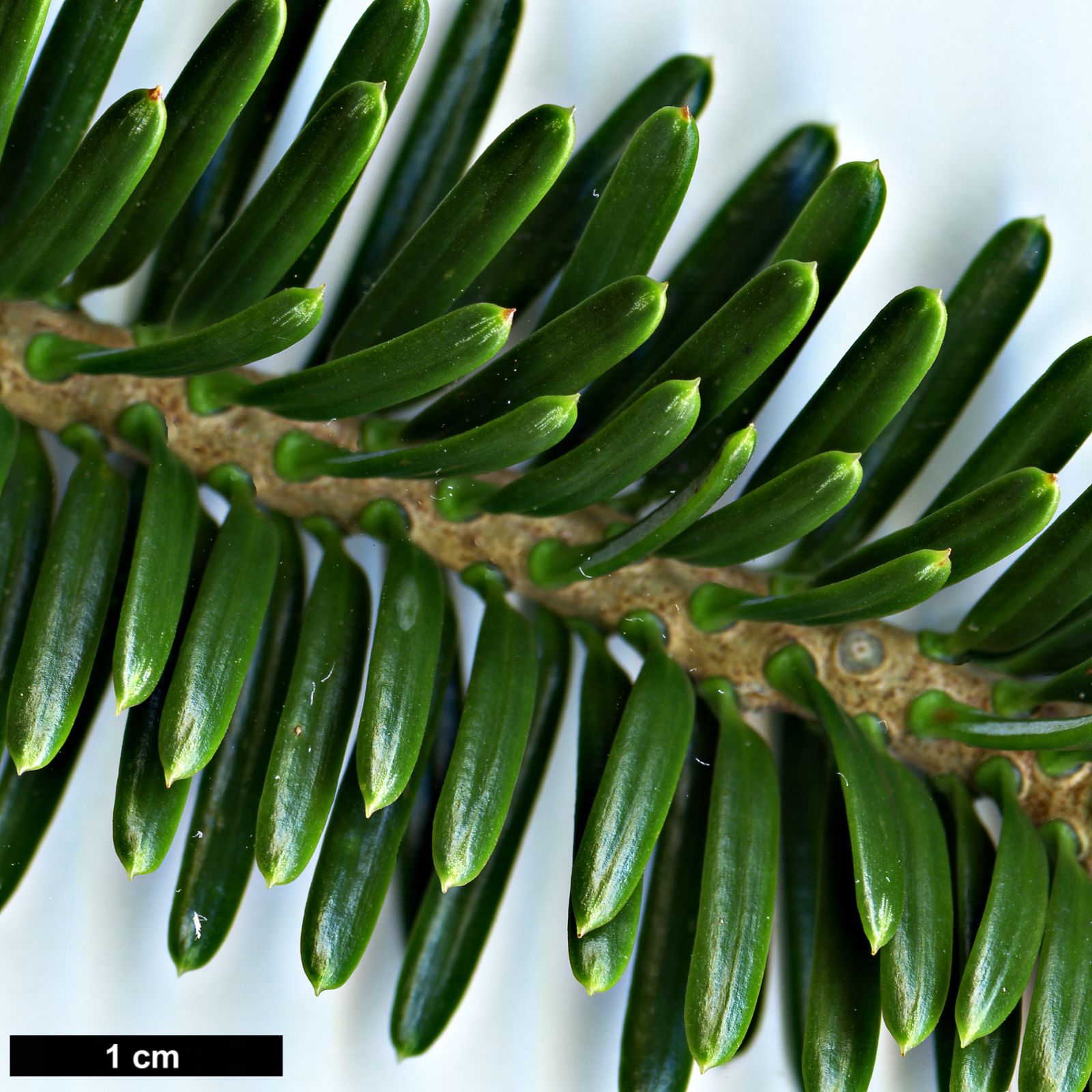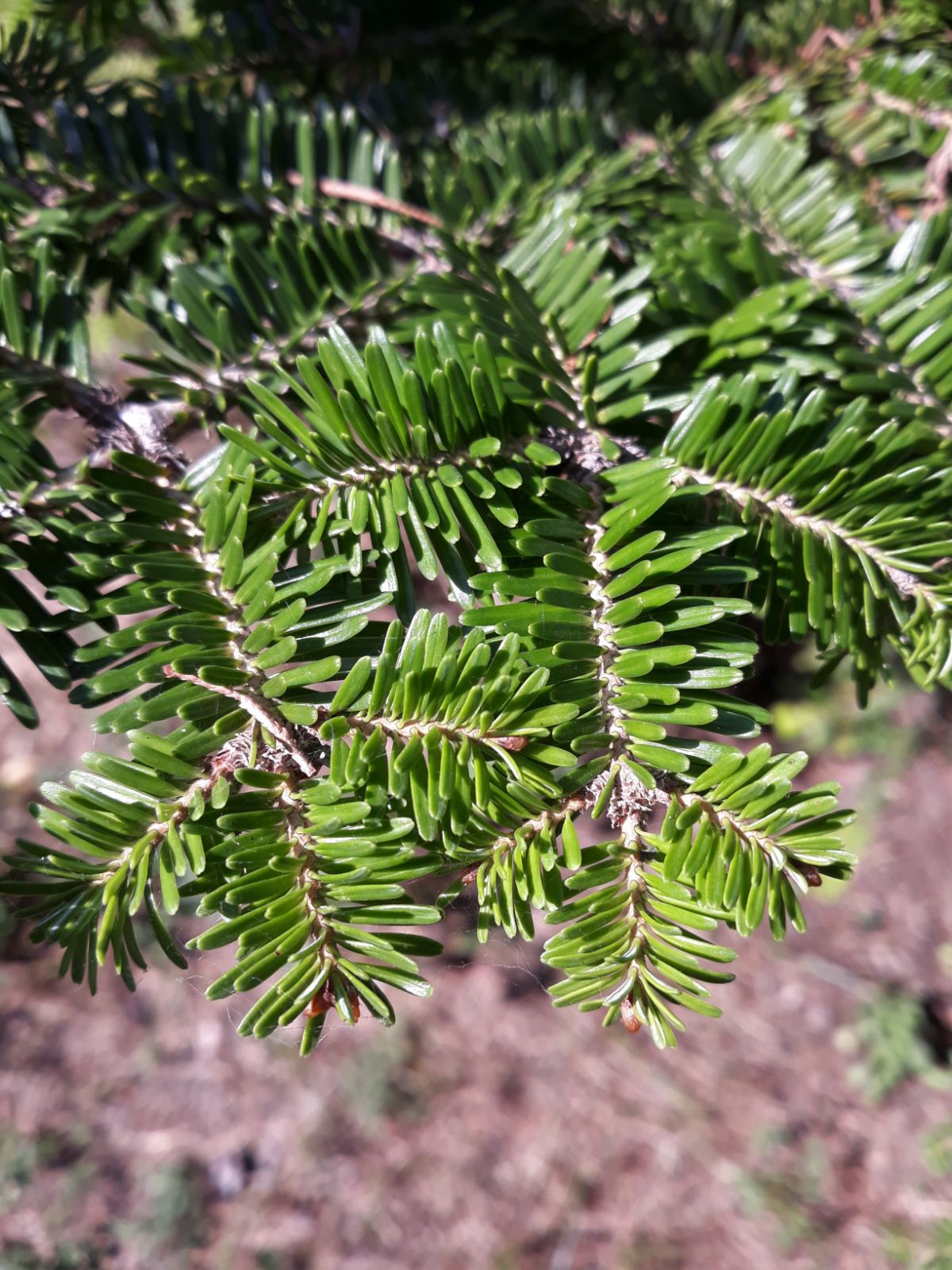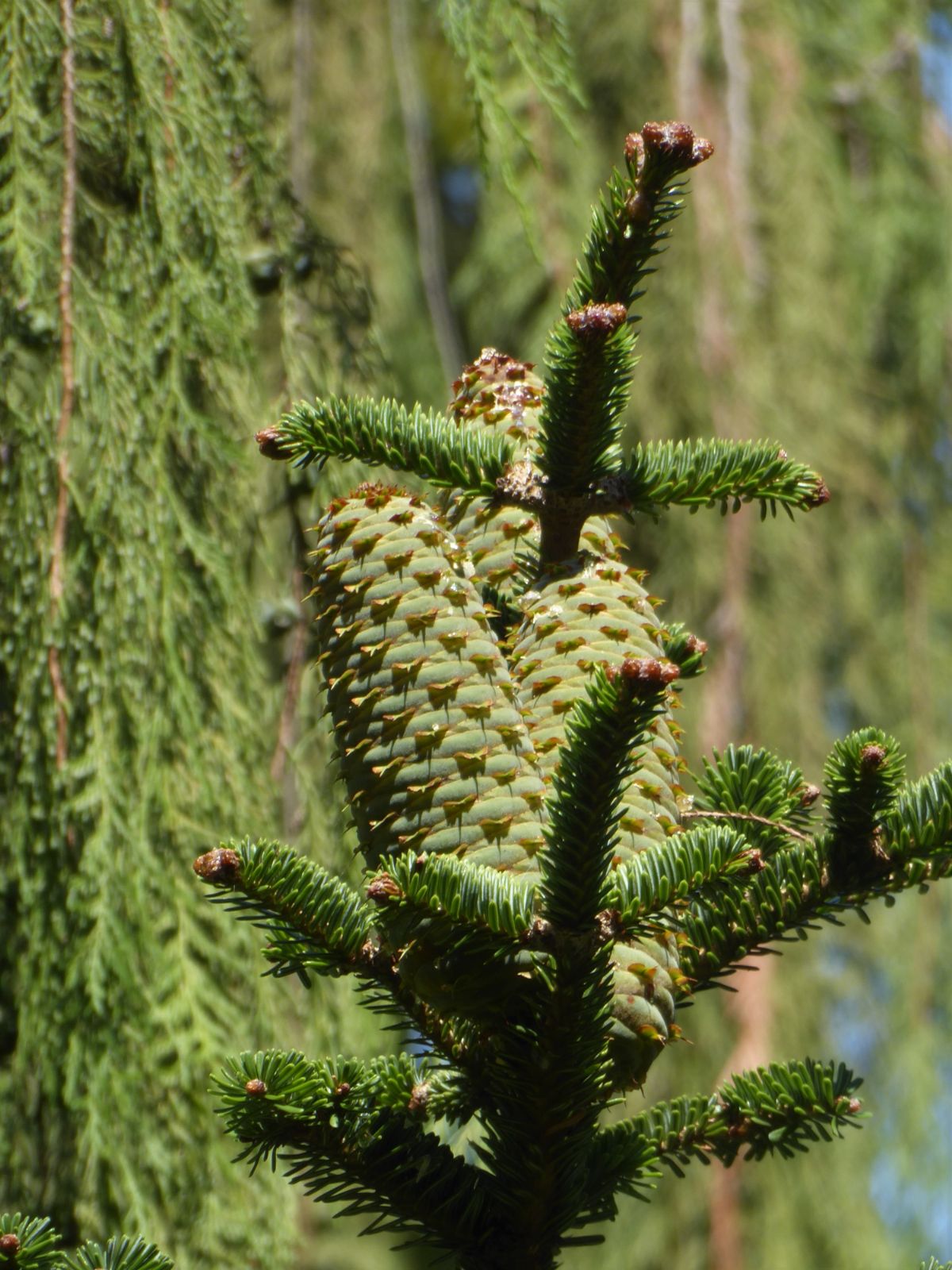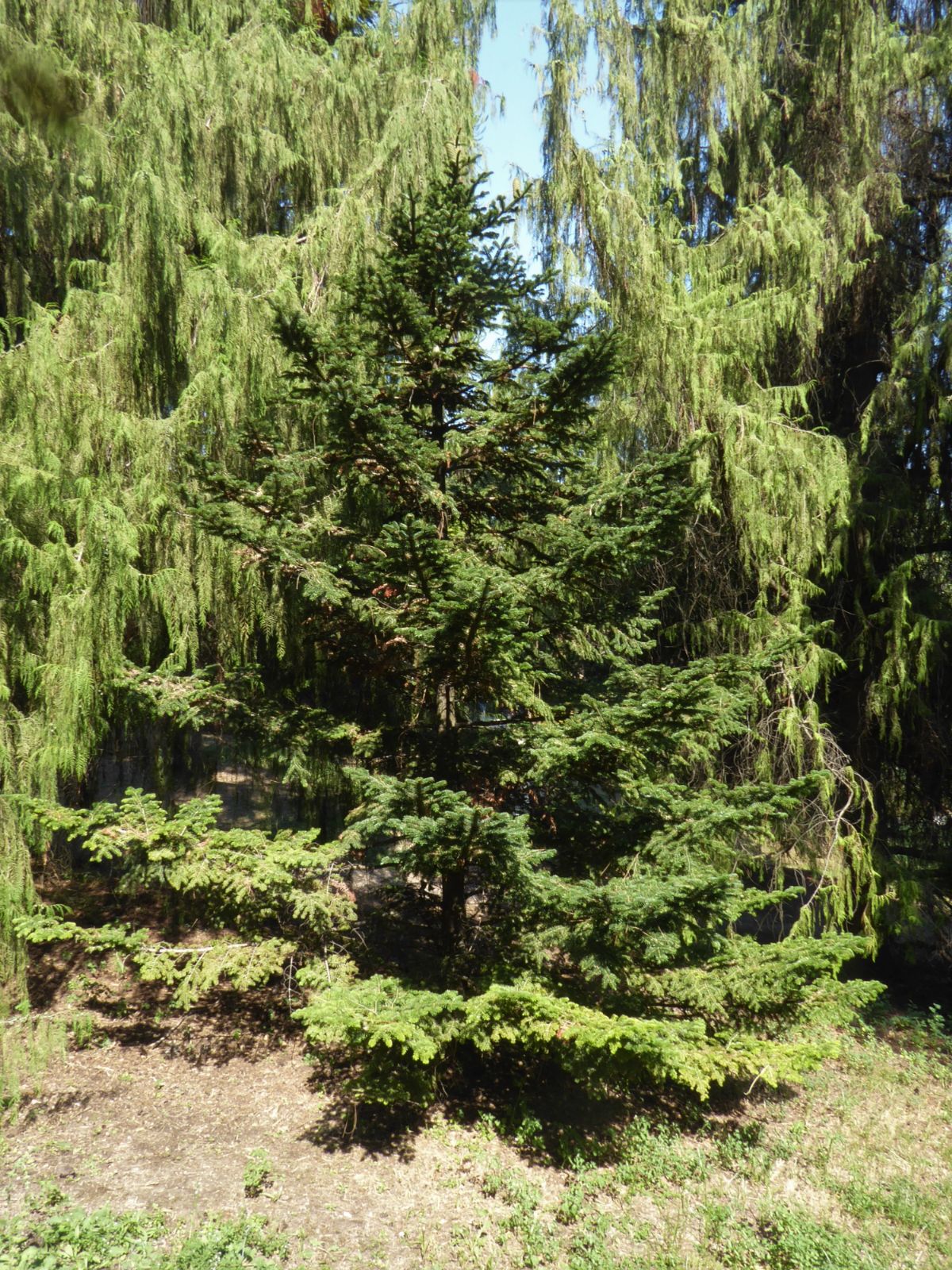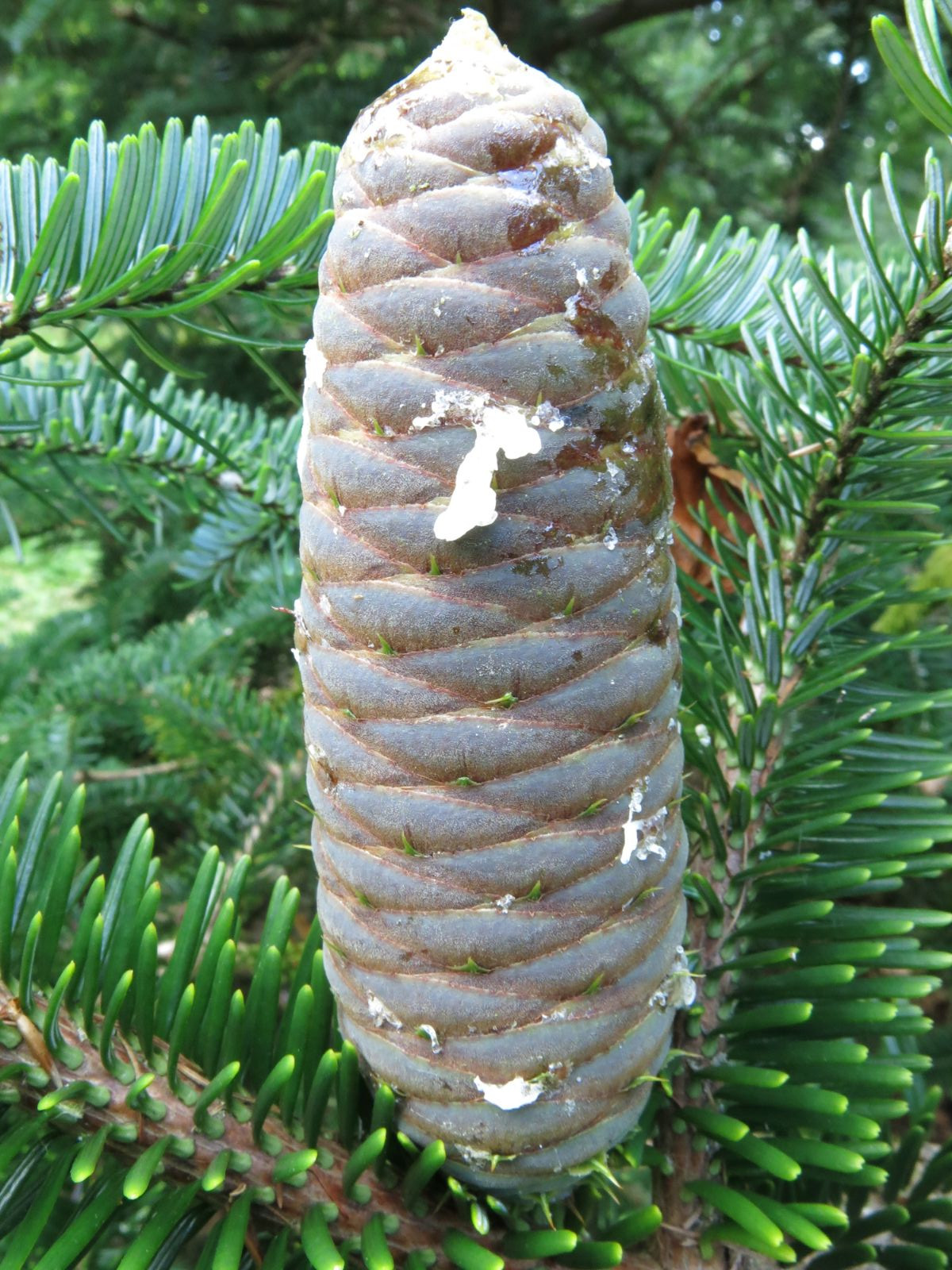Abies nebrodensis
Sponsor
Kindly sponsored by
Sir Henry Angest
Credits
Tom Christian (2021)
Recommended citation
Christian, T. (2021), 'Abies nebrodensis' from the website Trees and Shrubs Online (treesandshrubsonline.
Genus
Common Names
- Sicilian Fir
- Abete delle Nebrodi
Infraspecifics
Other taxa in genus
- Abies alba
- Abies amabilis
- Abies × arnoldiana
- Abies balsamea
- Abies beshanzuensis
- Abies borisii-regis
- Abies bracteata
- Abies cephalonica
- Abies × chengii
- Abies chensiensis
- Abies cilicica
- Abies colimensis
- Abies concolor
- Abies delavayi
- Abies densa
- Abies durangensis
- Abies ernestii
- Abies fabri
- Abies fanjingshanensis
- Abies fansipanensis
- Abies fargesii
- Abies ferreana
- Abies firma
- Abies flinckii
- Abies fordei
- Abies forrestii
- Abies forrestii agg. × homolepis
- Abies fraseri
- Abies gamblei
- Abies georgei
- Abies gracilis
- Abies grandis
- Abies guatemalensis
- Abies hickelii
- Abies holophylla
- Abies homolepis
- Abies in Mexico and Mesoamerica
- Abies in the Sino-Himalaya
- Abies × insignis
- Abies kawakamii
- Abies koreana
- Abies koreana Hybrids
- Abies lasiocarpa
- Abies magnifica
- Abies mariesii
- Abies nephrolepis
- Abies nordmanniana
- Abies nukiangensis
- Abies numidica
- Abies pindrow
- Abies pinsapo
- Abies procera
- Abies recurvata
- Abies religiosa
- Abies sachalinensis
- Abies salouenensis
- Abies sibirica
- Abies spectabilis
- Abies squamata
- Abies × umbellata
- Abies veitchii
- Abies vejarii
- Abies × vilmorinii
- Abies yuanbaoshanensis
- Abies ziyuanensis
Tree to 18 m, <1 m dbh; trees in cultivation may grow larger than the few, stunted wild specimens. Crown broad-conical. Bark smooth, light grey in young trees, becoming scaly in older trees and detaching in hard plates. First order branches spreading horizontally. Branchlets stiff, shiny, yellowish green and occasionally minutely pubescent at first, turning grey and glabrous with age; conspicuous ridges between the rows of leaves; leaf scars circular or ovate with a pale central area; vegetative buds conical, slightly resinous, 8–9 × 4–6 mm. Leaves spirally arranged, stiff, those of lower ranks pectinate, those of upper ranks crowded and forwards above the shoot (except on shaded shoots), 1.5–2.2 × 0.2–0.4 cm, mid-green and grooved above, with two greenish-white stomatal bands below, occasionally with a few broken stomatal lines near the apex above, apex acute or mucronate. Pollen cones 1.5–2 cm long, greenish-yellow with purple microsporophylls. Seed cones short-pedunculate, cylindrical, apex conical, 7–12(–16) × 3–4 cm, yellowish-green when immature, greenish- or reddish-brown when mature; seed scales cuneate, 2–2.5 cm long at midcone; bracts linear to spathulate, 2.5–3 cm long, reflexed and exserted with a short cusp. (Farjon 2017; Debreczy & Rácz 2011; Ostl 1989).
Distribution Italy Madonie Mountains of northern Sicily
Habitat Denuded Abies nebrodensis-Fagus sylvatica forest on steep, north-west facing limestone slopes. The Fagus are stunted and other associates tend to dominate, including Taxus baccata, Acer campestre, Fraxinus ornus, Laurus nobilis, Quercus petraea, Sorbus torminalis, and Ilex aquifolium (also stunted).
USDA Hardiness Zone 5
RHS Hardiness Rating H6
Conservation status Critically endangered (CR)
Taxonomic note Ostl (1989) suggested that A. nebrodensis is an ancient hybrid with A. alba as one of the parents. Fossil evidence indicates that A. alba was present in Sicily in the past, though it is now absent. Debreczy and Rácz note the presence of trees some 100 km distant in Calabria in south west Italy ‘intermediate between A. nebrodensis and A. alba’ (Debreczy & Rácz 2011).
Abies nebrodensis once formed significant forests in northern Sicily, but for a time it was thought to be extinct in the wild until it was rediscovered in 1957 (Debreczy & Rácz 2011). Today it ranks as one of the most threatened conifers in the world – only 30 individuals cling to the denuded slopes of Mt. Scalone in the Nebrodi Mountains. As such, it has been the subject of much study and of intense conservation efforts in recent decades, efforts that have sought to combine in-situ and ex-situ approaches (Schicchi, Knees & Gardner 2019). Conservation efforts have seen the species planted outside its narrow extant range in Sicily, but in these areas it continues to be the threatened by the effects of climate change, the poor health of young trees propagated in local nurseries, and the risk of hybridisation with nearby plantations of A. cephalonica (Schicchi, Knees & Gardner 2019). It is remarkable that a species so highly threatened as this has only been made available in very modest quantities for ex-situ planting in Botanic Gardens.
There are several important ex-situ conservation plantings across our area. In the UK the two principal plantings are at the Sir Harold Hillier Gardens and at Dawyck Botanic Garden. At the Hillier Gardens numerous trees are grown under the accession number 1977.1215; these are genuine, but sadly there are no associated records (B. Clarke pers. comm. 2021). At Dawyck, 15 wild genotypes are represented by plantings made in the early 2000s. These trees are all of traceable wild-origin and their identity is verified (Schicchi, Knees & Gardner 2019; BG-BASE data 2020) as is the identity of the Hillier trees (pers. obs. 2020). Other verified material grows in several collections in our area, but rarely in large numbers. The tallest, 24 m in 2019, grows at Leonardslee in Sussex and appears to be genuine (O. Johnson pers. comm. 2021).
Several institutions that report A. nebrodensis in their collections actually grow a hybrid (A. nebrodensis × ?) (see below). In assessing the presence of A. nebrodensis in collections, or indeed any taxon so highly threatened as this, it is vitally important that material has been expertly verified. Where this is not the case, or where the provenance of material is uncertain, trees should be viewed with suspicion and omitted from reports; a principle that we will apply here. Of the two trees discussed in New Trees (Grimshaw & Bayton 2009) only the one at Bedgebury has been seen in the preparation of this account, and this appears genuine. Besides the Dawyck trees, other known-origin examples grow at Bedgebury National Pinetum in the UK (from a more recent gathering than the aforementioned specimen), in the Gothenburg Botanic Garden, Sweden (descended from collections made in Sicily in 1963 (Aldén 2006)), and at the Botanical Garden of Rome, Italy (J. Grimshaw pers. comm. 2020).
Hybrid
A. nebrodensis × ?
RHS Hardiness Rating: H7
Besides the fifteen verified, known-origin Nebrodi Firs growing at Dawyck Botanic Garden in Scotland, there are three older trees, bearing the accession number 19638023. Until recently these were labelled A. nebrodensis, having been sent to the Royal Botanic Garden Edinburgh (RBGE) as seed bearing that name from the Arboretum National des Barres, France, in the early 1960s. Their identity was only called into question in 2016 when Martin Gardner of RBGE and the present author undertook to verify the entire conifer collection at Dawyck. These three trees aroused suspicion by being particularly vigorous and by exhibiting different foliar characteristics from the nearby group of verified, known-origin trees. On examining their seed cones it soon became clear that these three trees were of hybrid origin – their cones had included bracts quite unlike A. nebrodensis, but their foliar characters did not fit any of the Mediterranean species known for that feature of the seed cones (pers. obs. 2016, 2020).
Other trees with a considerable likeness to the hybrids at Dawyck grow at Thorp Perrow, North Yorkshire, UK (pers. obs. 2016) and after having concluded that the Dawyck trees were hybrids, it was later possible to re-examine the trees at Thorp Perrow and determine that these, too, were of hybrid origin, ostensibly of the same or a very similar parentage to the Dawyck trees (pers. obs. 2017). The Thorp Perrow trees have themselves been vegetatively propagated at least once that we know of, by Jim Russell in 1986, and the resulting plants are growing at the Yorkshire Arboretum, erroneously bearing the name A. nebrodensis (Yorkshire Arboretum 2020). The same will be true of any other institutions that received material either directly from Arboretum des Barres, for example the Arnold Arboretum which grew this material under the accession 858–63, or second-hand via re-propagation events as is the case at the Yorkshire Arboretum.
This has serious implications for ex-situ conservation, for clearly several collections that would previously have reported A. nebrodensis do not in fact grow the species in its pure form, thus negating any conservation value. The three Dawyck trees are (in 2020) labelled ‘Abies hybrid’, and while their exact parentage is unknown, more recent examination of the trees at the Yorkshire Arboretum suggests the influence of A. numidica both in foliar characteristics as well as in the seed cones (pers. obs. 2020). The fact that the seed was sent out as A. nebrodensis (BG-BASE data 2020) tells us this was the seed parent, but Arboretum des Barres was well known for its collection of Mediterranean firs, including not only A. numidica but A. pinsapo too, and these two species are very similar. It may be that only a future molecular investigation will be able to determine the exact parentage, although Knees (2011) was unable to identify any markers for the reliable separation of the Mediterranean species.
This situation should serve as a salient reminder that efforts to assess the extent to which threatened taxa are represented in cultivation, which neither take into account whether individual accessions are of known wild-origin, nor whether the material has been expertly verified, are distinctly flawed. The ease with which Mediterranean Abies species hybridise with one another makes it likely that other trees in collections bearing the name A. nebrodensis, but where their exact origin is unknown, will not be genuine, so any such trees should be scrutinised carefully. Ex-situ conservation is an essential tool in the effort to save Critically Endangered species such as the Nebrodi Fir from extinction, and it seems imperative that more confirmed, wild-source material should be shared with reputable ex-situ collections as soon as possible.
'Sicilian Gold'
A small pyramidal selection with yellow leaves. Introduced by Collectors Nursery, Washington, USA (Auders & Spicer 2012).


